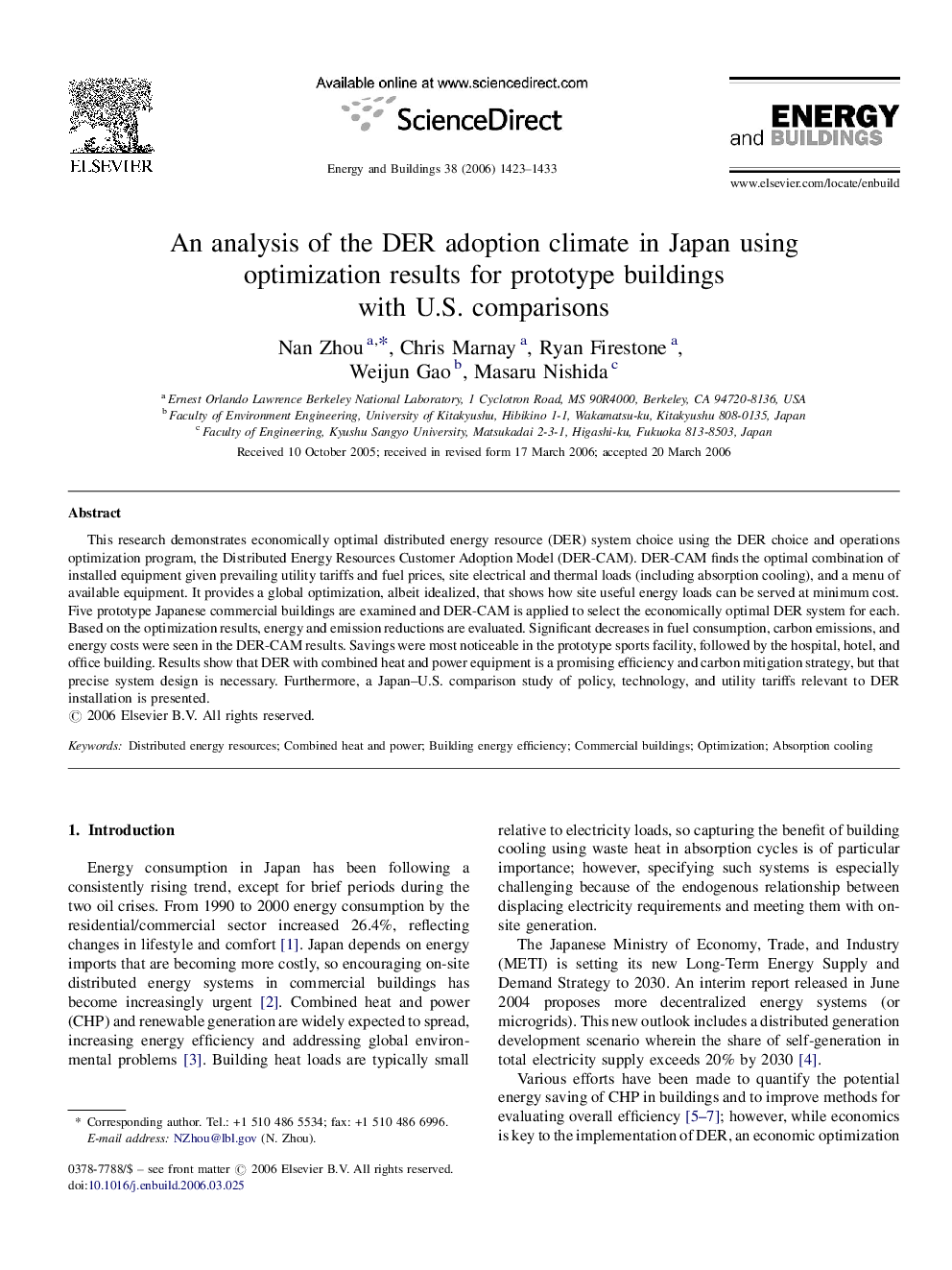| کد مقاله | کد نشریه | سال انتشار | مقاله انگلیسی | نسخه تمام متن |
|---|---|---|---|---|
| 265318 | 504147 | 2006 | 11 صفحه PDF | دانلود رایگان |

This research demonstrates economically optimal distributed energy resource (DER) system choice using the DER choice and operations optimization program, the Distributed Energy Resources Customer Adoption Model (DER-CAM). DER-CAM finds the optimal combination of installed equipment given prevailing utility tariffs and fuel prices, site electrical and thermal loads (including absorption cooling), and a menu of available equipment. It provides a global optimization, albeit idealized, that shows how site useful energy loads can be served at minimum cost. Five prototype Japanese commercial buildings are examined and DER-CAM is applied to select the economically optimal DER system for each. Based on the optimization results, energy and emission reductions are evaluated. Significant decreases in fuel consumption, carbon emissions, and energy costs were seen in the DER-CAM results. Savings were most noticeable in the prototype sports facility, followed by the hospital, hotel, and office building. Results show that DER with combined heat and power equipment is a promising efficiency and carbon mitigation strategy, but that precise system design is necessary. Furthermore, a Japan–U.S. comparison study of policy, technology, and utility tariffs relevant to DER installation is presented.
Journal: Energy and Buildings - Volume 38, Issue 12, December 2006, Pages 1423–1433